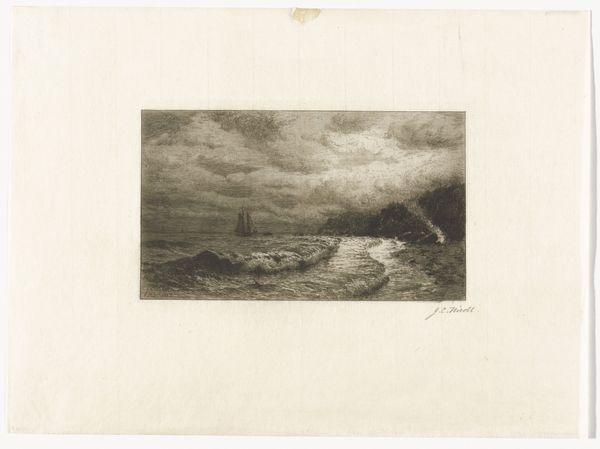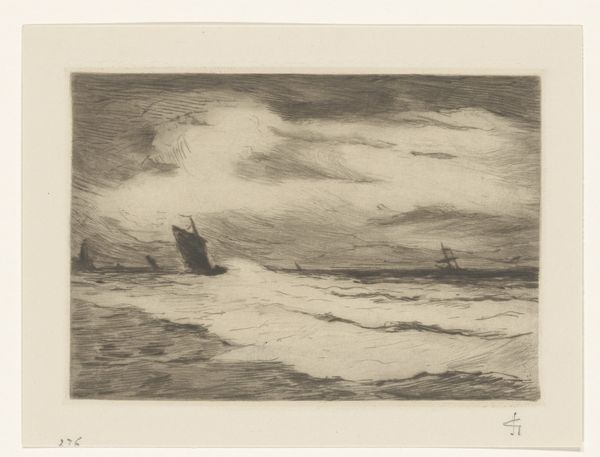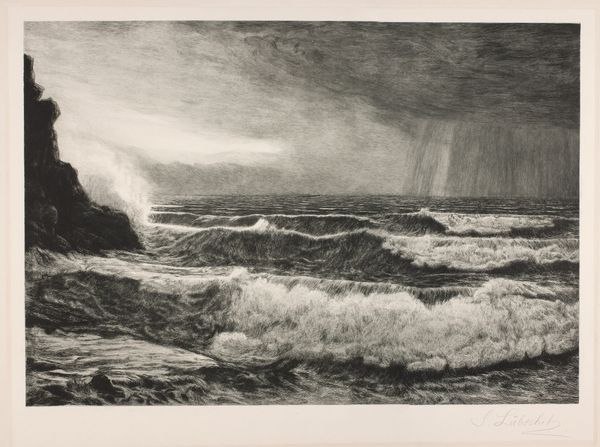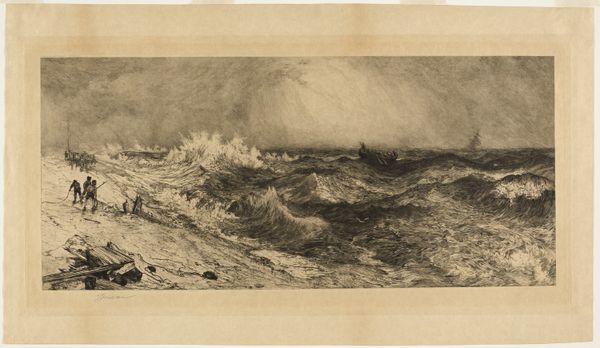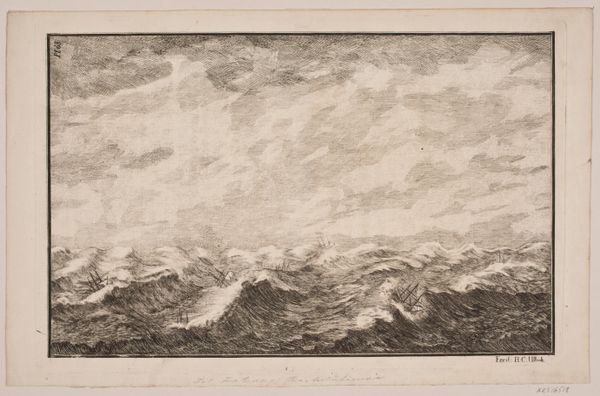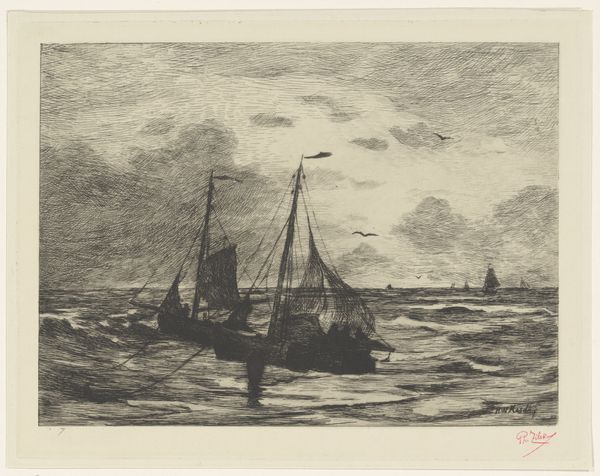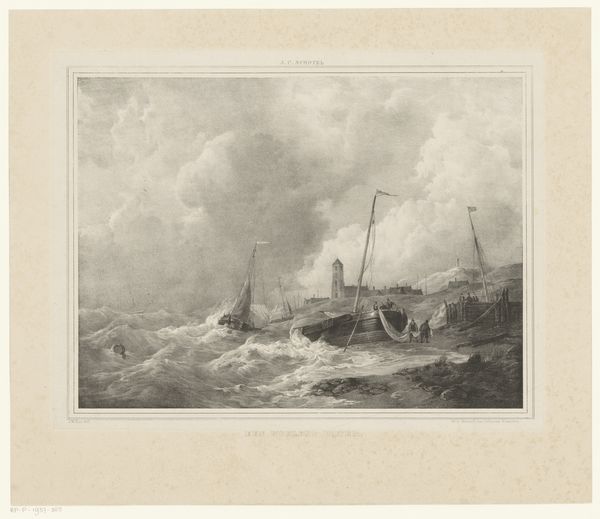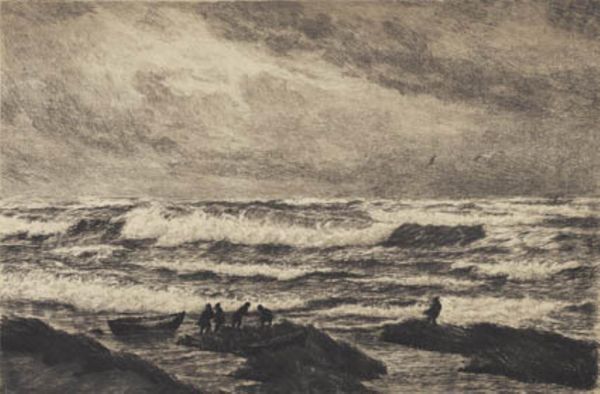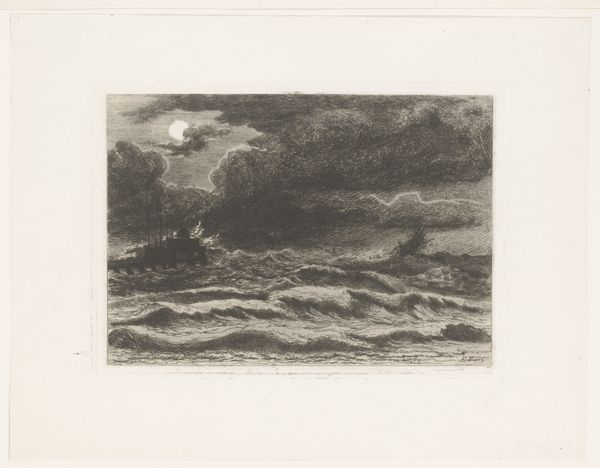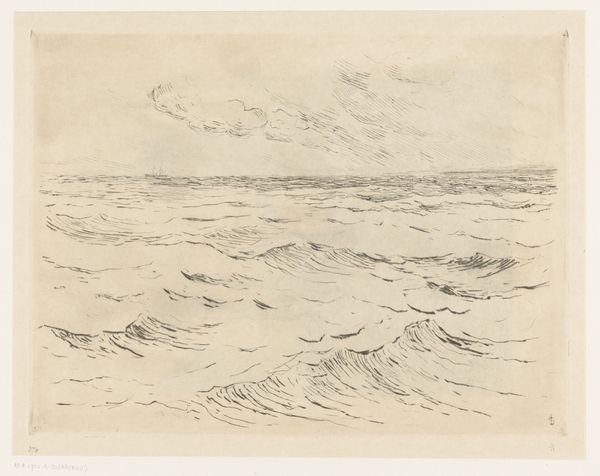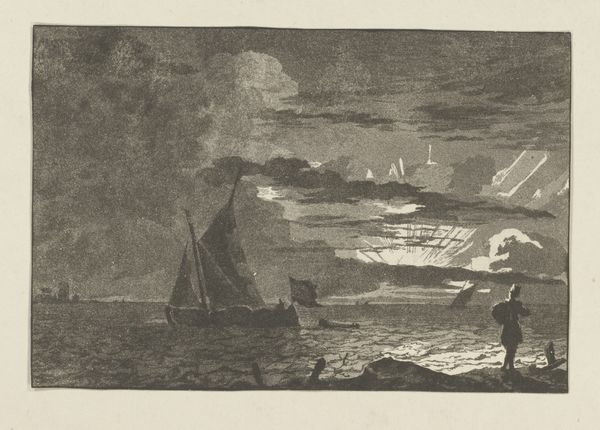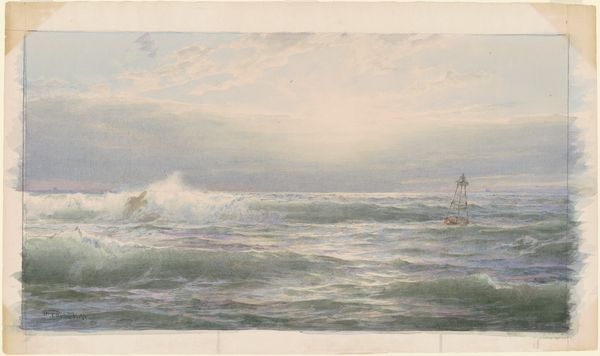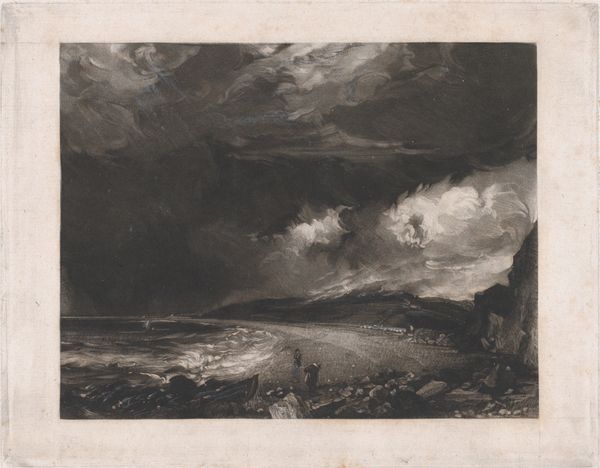
Dimensions: image: 145 x 248 mm sheet: 291 x 395 mm
Copyright: National Gallery of Art: CC0 1.0
Curator: This is James Craig Nicoll's etching, "A Smuggler's Landing Place," dating back to 1883. Editor: The instant I see it, I’m struck by the chiaroscuro effect—the strong contrast of light and dark gives the seascape a rather ominous feel. Curator: It's an interesting title considering this play with light, suggesting hidden activities under the cover of a tempestuous sky. The turbulent waves could certainly conceal clandestine arrivals. What symbols do you find especially evocative here? Editor: For me, the small boat battling the waves signifies the personal risks of smuggling, and perhaps broader social upheavals in a time of great wealth inequality, and even resistance against restrictive trade laws. The shoreline offers both refuge and exposure. I suppose those are fairly standard artistic dichotomies. What about you? Curator: That's very insightful. I was just contemplating that even beyond literal interpretations of crime, the smuggler has served as a potent archetype. Throughout history, the archetype symbolizes transgression, defiance of societal norms. This landing, rendered with such dynamic strokes, feels charged with that historical memory. Editor: I find myself wondering, too, about the intended audience. Nicoll exhibited widely, reaching many people, yet what impact did such a scene have in 1883, especially in America, on viewers encountering it? Was it meant to celebrate, condemn, or simply document such acts of defiance? Curator: Good questions, indeed. Looking at this particular work in its own cultural context, the landscape—a common feature in the Romanticism style of the era—serves here less as background than as an active participant. It intensifies the emotional drama. Editor: I can certainly see that. The Romantic underpinnings allow Nicoll to evoke strong feelings. Perhaps the social implications weren't his focus, leaving them for viewers to read in themselves, depending on their experience and their time. It does allow many meanings to coexist. Curator: Exactly. Thank you. Now when I return to this scene, my perception has been deeply colored, so to speak, and I see the artwork with completely renewed sight. Editor: Agreed! I’ll carry the questions of reception with me now—the impact this potent scene might have had, rippling outwards at the time, and beyond.
Comments
No comments
Be the first to comment and join the conversation on the ultimate creative platform.
